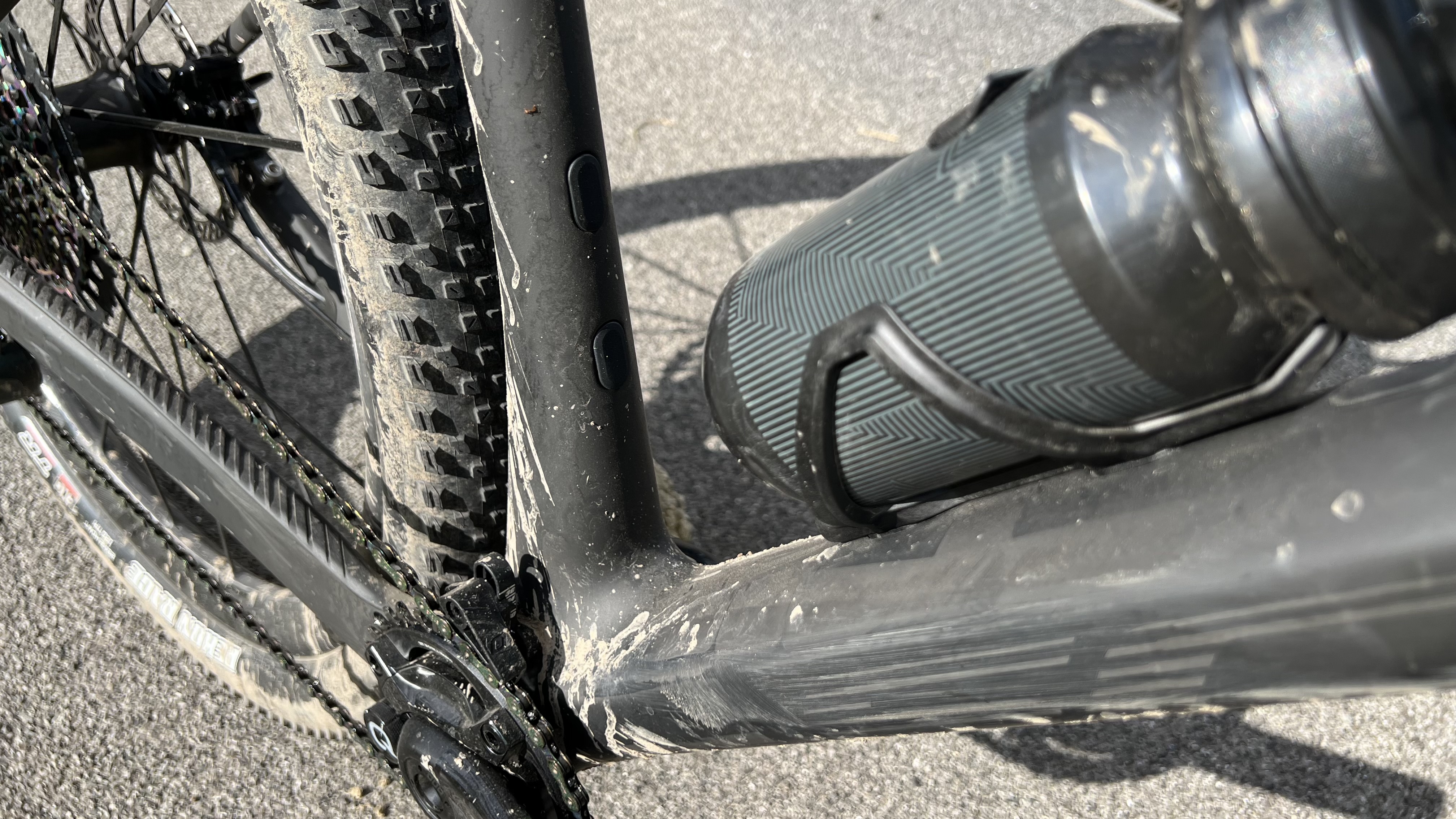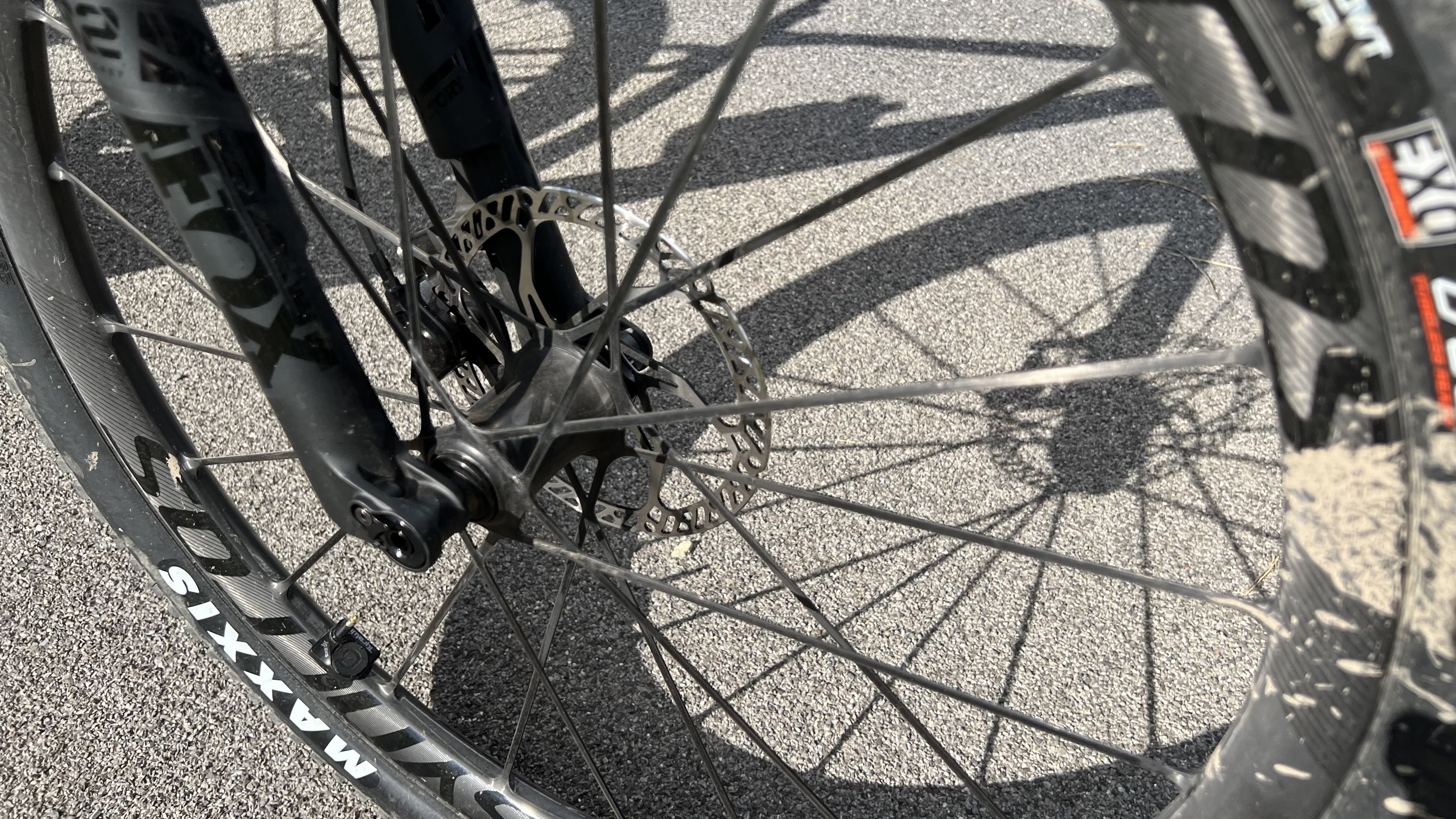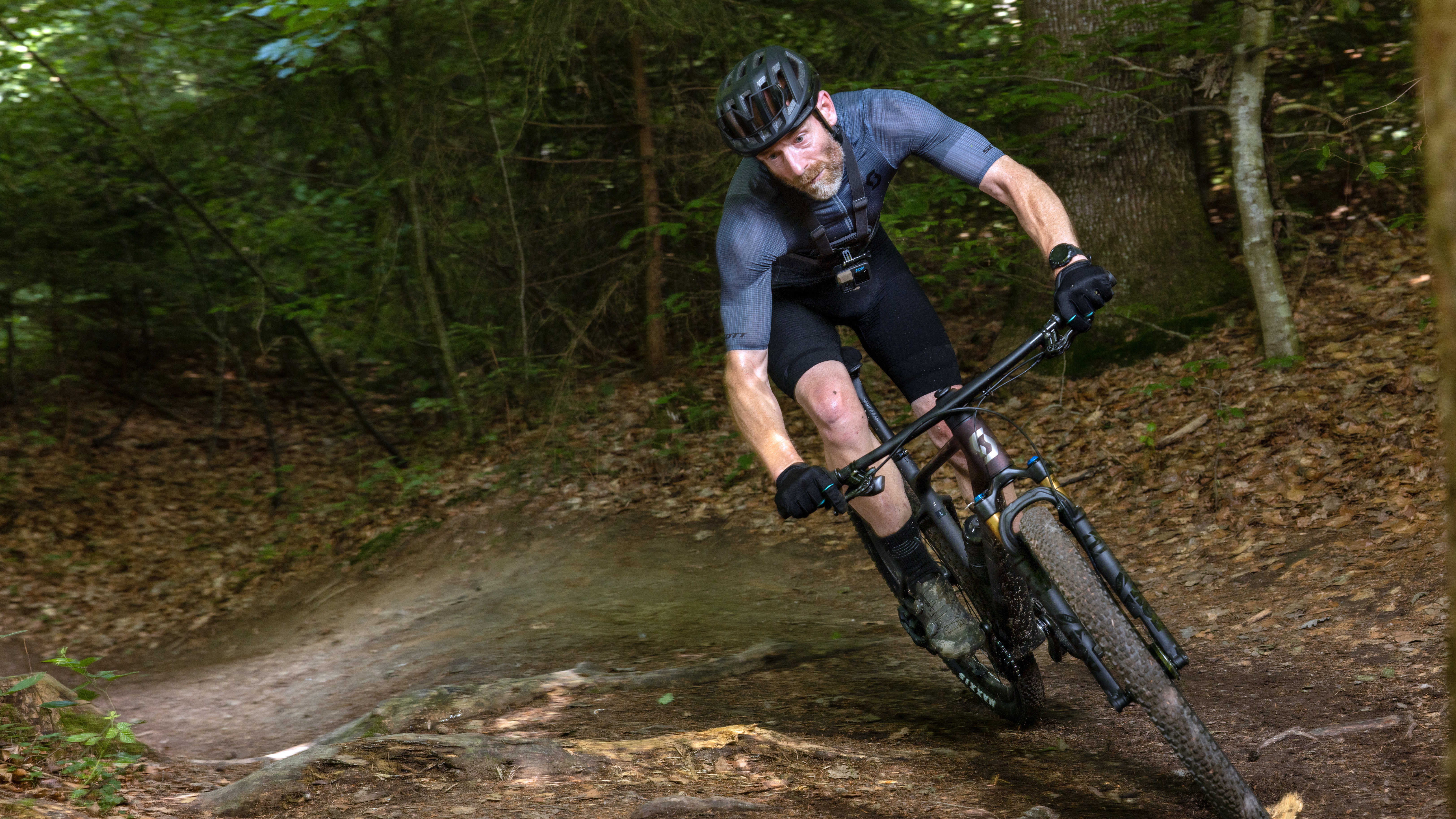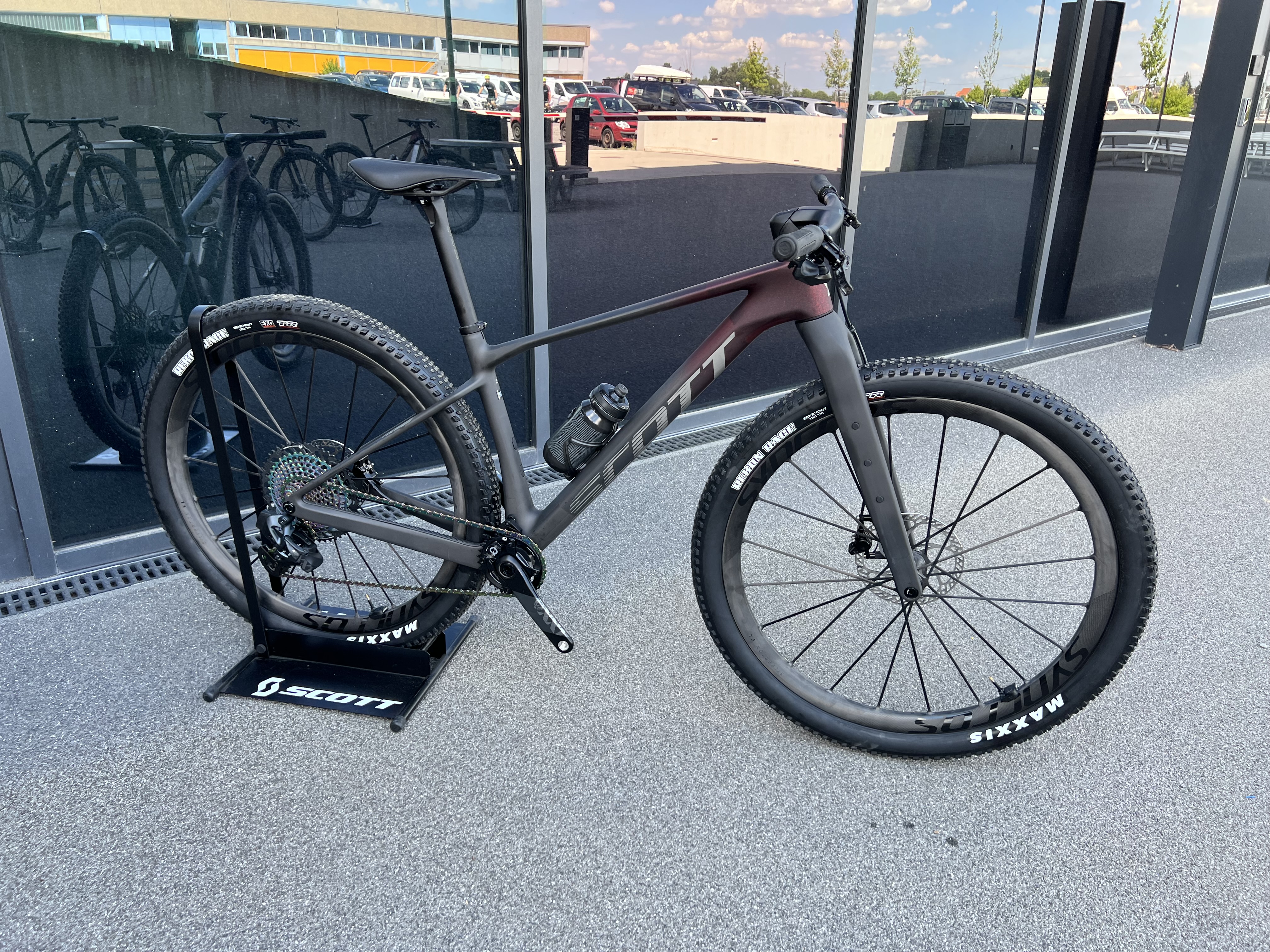Bike Perfect Verdict
Scott’s Scale RC sets a new benchmark for the ultimate take no prisoners XC race hardtail, with aggro adjustable geometry and pure performance spec to match. That comes at a punishing cost in terms of cash and comfort though.
Pros
- +
Super light, super stiff frame
- +
Super light, super stiff wheels
- +
Aggressive, easily adjustable geometry
- +
Phenomenal attention to practical and performance detail
- +
Insanely exotic spec
Cons
- -
Insanely exotic cost to match the spec
- -
Take no prisoners ride vibe
- -
Heavier than you might expect
- -
Cheaper Scales make more sense
Why trust BikePerfect
Scott’s Scale hardtail racer hasn’t changed in six years and was still very competitive, but now it’s been totally redesigned in a properly radical format. The flagship RC SL option I tested at the launch in Switzerland is loaded most exotic, expensive spec I've ever ridden. So what’s new and how does it stack up against the best XC hardtails for racing or just flat out recreational riding?
Design and geometry
“Radical" and “XC race hardtail” don’t normally sit together in descriptions, but Scott have spent the six years since the launch of the last Scale not just refining but revolutionizing their pure performance flagship.
While the previous Scale frame had joints at the base of the downtube and a separate seat tube, the whole front end is now a single monocoque lay-up. That allows much better accuracy and construction control of the 300 different pieces of various carbon ply. The final lay-up is also the result of over one million potential combinations processed using automated tools and then physical testing on Scott’s in-house stress labs. The new design also reduces the joint area to just the small chainstay and seatstay junctions so there’s less material overlap. The seatstays are now dropped below the top tube junction point to create more vertical movement and more suspension effect in the seatpost. But not so far as the Addict and Addict Gravel bikes that inspired the idea as that meant too much fore and aft saddle movement for a consistent pedaling position.
At the far end of the frame, the dropouts are now a hollow extension of the tube rather than being solid or using an alloy insert. The axle head sits in a separate pocket on the inside face for a more direct loading, shorter axle and a 7g weight saving. The rear brake mount loses it’s alloy bridge to save another 10g. There’s a ton of really thoughtful practical detailing too though. The bottle mounts sit in removable glass reinforced plastic inserts which can be swapped for blanks if not needed, or replaced if the threads get messed up. A small door under the bottom bracket lets you get to the securing plate for the included mini chain guide, access to the dropper cables or to fit a Di2 battery charge plate – if you go for a Shimano electrical build.

The geometry is equally radical too. The headtube uses the same rotatable, pegged headset cup system as the Spark full-suspension racer. These give + / - 0.6 degree head angle adjustment between 67.9 degrees as supplied to a super slack (for XC) 66.7 degrees in a few minutes. Or you can switch to neutral cups (included with the bike) for a 67.2-degree steering angle. Any cables and brake hose are now routed through the headset too. Both to clean things up and remove the need for heavy, reinforced cable insert points on the frame, saving 57g in the headtube alone. That does mean swapping bearings or installing the neutral cups involves unplugging then rethreading the hoses or cables though. The seat angle is similarly progressive at an average of 77.4 degrees, while reach measurements have grown 20mm to 442mm on the medium and 463mm on the large I tested.
While the hardware weights have gone down significantly, longer reaches, and higher strength ratings on the frame mean the overall weight loss isn’t as dramatic, particularly on the pricier versions. That means a medium sized top end HMX SL frame that’s exclusive to the bike reviewed here drops 32g to 847g with all fixtures and fittings. The mid range HMX drops 57g to 912g and the entry level carbon HMF is 126g lighter at 1013g.
Each of the four sizes in each carbon grade use a different lay up and tube volume to tune ride and weight and Scott say they spent the same amount of development and test time on each frame. There are two alloy Scale frame options too, one with a bolt-through rear axle and one with QR rear dropouts for the cheapest builds.


Components and build
Scott always like to have a show stopping range topper, but they really have gone overboard on the spec of the RC SL. The Syncros Silverton SL2-30 CL carbon wheels (as used by Olympic Champion Tom Pidcock) with their co moulded carbon rims, spokes and flanges – the hubs shell is glued in afterwards – are nearly €3500 alone. The Syncros Fraser iC SL XC Carbon cockpit (€400+) and Syncros Belcarra SL Carbon saddle (€270ish) are moulded in a single piece for minimal weight.
Like the frame, it’s not all about minimal weight though. The SRAM XX1 Eagle AXS wireless transmission comes with a built-in power meter because that’s what racers will want. The FOX 32 SC Float Factory 100mm travel fork gets a triple mode, twin lever RideLoc2 remote control for the same reason. There are ‘Samurai Sword’ tubeless plug and file tool inserts in the ends of the bars and an essential Allen and Torx key pull out tool hidden in the rear axle. Integrated GPS and GoPro style mounts are available for the bar and/or stem top too.
Other practical skews include the Maxxis Rekon Race tires being the fattest 2.4in version. They sit on the wider 30mm rim option of the Silvertons and you get SRAM’s Bluetooth pressure transmitting TireWizz valves as standard. That does all make for a significantly higher weight than you might expect at 8.9kg for a medium bike. If you want the ultimate high performance rigid racer or bike packing bike though Scott have created a 605g carbon fork complete with cage mounts which brings weight down to 8kg. Alternatively some of the ‘lower’ spec bikes with less extras attached/plugged in may actually be lighter too.

Ride, handling and performance
There’s an unwritten press launch rule amongst most marketing departments that goes something like “Always let the journalists win”. However, as we rolled out from their incredible new, Sci Fi eco HQ in Switzerland, the entire staff of Scott seemed to have signed up to a “Destroy every journalist here. Even the 20 year old World Cup XCO race mates from the German and Dutch media” mantra. Apart from a couple of brief stops for posed action photos (one on a climb, obviously) I cannot remember riding harder for longer than each of the Scale test rides since the last time I raced ‘seriously’.
Between the hyperventilating, lactic burn and hallucinogenic lack of oxygen though it was still clear that the new Scale is blisteringly, brutally fast. While it’s not the lightest hardtail option by over a kilo and the DT Swiss based hub internals have a ten-degree lag before engagement, when they do connect, the power delivery is sledgehammer direct. Part of that is undoubtedly the one piece Silverton wheels, which Syncros claim are 30 percent stiffer laterally and 50 percent torsionally than a conventional steel spoked wheel. The oversized downtube, swollen seat tube base, massive BB92 bottom bracket shell with it’s sculpted ‘flow lines’ and super deep chainstays clearly harness any of the watts you can put through the Quark power meter with maximum efficiency and urgency. The ability to toggle the low speed compression of the fork to firm it up, or lock it out entirely is a big psychosomatic, bounce stopping bonus when you’re hurling yourself at a smooth climb hard enough to hurl yourself. The super seat steep angle is great for steep, technical climbing poise too and I was surprised it didn’t feel too far forward on shallower slopes and hadn’t blown up my knees or back even after several hours of deep pain cave exploration.
Even with the longer reach and slacker head angles the front end is still laser accurate in terms of placement too. Something that the Scott engineers confirmed they traded extra weight for, when initial tester/racer feedback suggested lighter frame lay ups were too flexy in flat out, maximum stress situations. Unsurprisingly the two-degree difference in head angle was very obvious when we swapped to slack for the second ride. While it meant a wider turning circle on climbs, it let me repeatedly push the semi slick front tire and skinny Fox forks way harder than I normally would. Once I was dialed into the handling, I was even comfortable drifting the front tire on the twisty, dusty, often off-camber roller coaster singletrack of the test sessions, which is certainly something I don’t normally say about XC hardtails with no dropper post. Being able to choose between speed stability or switchback responsiveness in a matter of minutes is definitely great feature for different track/race needs as well.

The obvious casualties of this rigidity are comfort and flowing speed/traction over rough sections. Scott repeatedly referred to the frame as having a ‘Stiffness Zone’ (headtube, downtube, bottom basket, chainstays and dropouts) of bigger tubes and ultra and high modulus fibers and then a ‘Lightweight Zone’ (toptube, seattube, seatstays) of skinnier tubes and more compliant composites. Compared to the solid concrete feel through my feet, there was tangible movement in the saddle when you’re seated to ease smaller impacts through rougher sections. Larger root or rock spikes come slamming through the wheels and frame without any softening though and the rear end frequently got kicked high and wide by mid turn roots and rocks when I was driving the front end hard. Even running teen pressures in the big, normally buoyant Maxxis tires, I often got jolted out of pedaling rhythm or slammed and stalled where a more flexible bike would likely have sucked up the hit and rolled on. That inevitably affected traction, with more attention needed to squeeze the back wheel onto the deck or feather power through the cranks to keep the rear Rekon connected on loose ground. Unfortunately, I didn’t have time to swap onto conventional wheels (I was busy switching the head angle), but one of the World Cup media ringers who did told me things were a lot more forgiving and floated in that setup. He still said the Scale was definitely on the stiff side though, and as a race test writer he’d ridden pretty much every option going from the extensive Euro hardtail buffet, so his feedback was likely legit.
The two days of flat out test riding weren’t without some issues either. The shimmed seatpost on my bike continually slipped down despite very high clamp torque that eventually damaged the bolt. The 180mm front rotor on the Trickstuff brakes seemed like overkill given their power and the heavily drilled rotors also had a juddering feel and vocal warble in use. The Fraser cockpit is fixed in terms of sweep and roll adjustment too, although there are eight different reach/height options available aftermarket, including Nino Schurter-style negative drop options.

Verdict
Scot’s new Scale RC SL is undoubtedly the new benchmark for ultimate spec and spend on a production race hardtail. The HMX SL frame is unique to this model, but all-carbon Scales are loaded with some really smart weight saving and practicality boosting features. The adjustable geometry is awesome for aggressive riders, without excluding more conservative campaigners. Max power racers will also appreciate the uncompromising frame and wheel stiffness and features like watt counting cranks as standard. It’s a heavier bike than you’d expect for an 850g frame though and the price is comically stratospheric. That means most riders will find better value – and a smoother ride – further down the Scale price ladder.
Tech specs: Scott Scale RC SL 2023
Discipline: XC and Marathon racing, ultra fast off-piste bikepacking
Price: $13,999.99 / £13,999.99 / €13,999.99
Head angle: 67.9 – 66.7 degrees
Frame material: Scott HMX-SL carbon composite
Fork: Fox 32 SC Float Factory 100mm travel fork with RideLoc2 remote control
Wheel size: 29in
Drivetrain and gears: SRAM XX1 Eagle AXS rear mech, shifter and 34T power meter chainset with PF92 bottom bracket and 10-52T 12 speed cassette
Brakes: Trickstuff Piccola Carbon hydraulic with 160mm rotors
Tires: Maxxis Reckon Race 29 x 2.4in
Wheelset: Syncros Silverton SL2-30 CL carbon
Bars and stem: Syncros Fraser iC SL XC Carbon 740mm bar and integrated stem
Seatpost: Syncros Duncan SL Carbon rigid seatpost
Saddle: Syncros Belcarra SL Carbon saddle.
Size: S, M, L, (tested) XL
Weight: 9.1kg (large without pedals)

Guy Kesteven has been working on Bike Perfect since its launch in 2019. He started writing and testing for bike mags in 1996. Since then he’s written several million words about several thousand test bikes and a ridiculous amount of riding gear. He’s also penned a handful of bike-related books and he reviews MTBs over on YouTube.
Current rides: Cervelo ZFS-5, Specialized Chisel, custom Nicolai enduro tandem, Landescape/Swallow custom gravel tandem
Height: 180cm
Weight: 69kg

